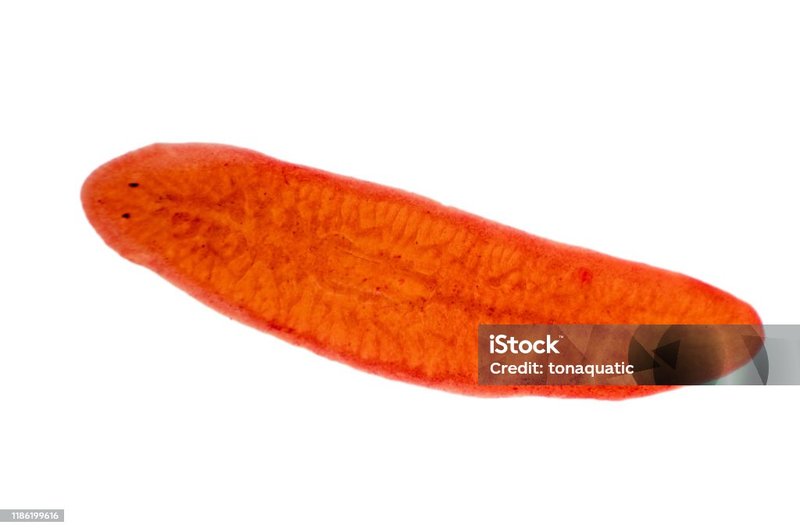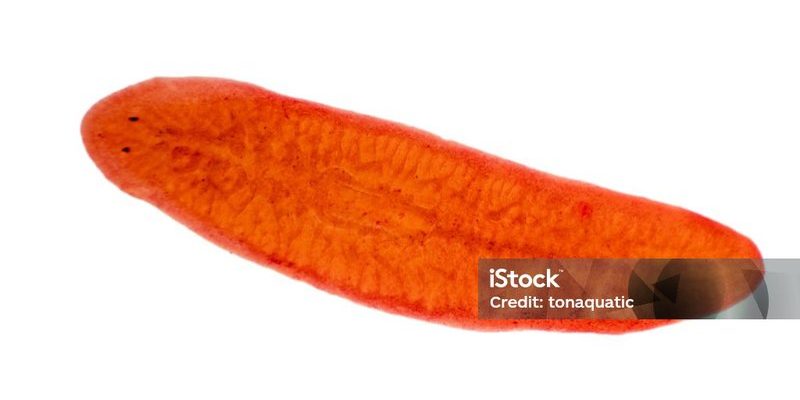
In this exploration, we’ll delve into how to effectively monitor these creatures over the course of a year. Whether you’re an amateur biologist, a classroom teacher, or simply curious about these flatworms, understanding how to observe their seasonal shifts can be both enlightening and fun. Plus, you’ll learn about some handy remote tools that can help you keep track of their activity without being right there with them all the time.
What Are Planaria?
Planaria are small, freshwater flatworms belonging to the class Turbellaria. You might not think much about them at first glance; they’re usually not more than a few centimeters long and come in shades of brown, black, or even white. However, they are quite remarkable for a few reasons. First, they have an incredible ability to regenerate lost body parts. If cut in half, a planarian can regrow its head, tail, or even both!
These worms are primarily found in clean, shallow waters, like ponds and streams. They’re predatory creatures, feeding mainly on small insects and other tiny organisms found in their habitats. They glidingly move around on their cilia-covered bodies, which might remind you of a tiny hovercraft floating across a smooth surface. So, why exactly should we monitor their activity across the seasons?
Why Monitor Planaria Activity?
Monitoring planaria activity isn’t just a quirky hobby; it’s essential for several reasons. First, observing their behaviors helps scientists understand how environmental factors impact aquatic life. For example, do warmer months lead to increased reproduction rates? Do light conditions affect their feeding patterns? By keeping track of these factors, we gain insights into the health of our ecosystems.
Plus, planaria can serve as indicators of water quality. A sudden drop in their population might signal pollution or habitat changes, which is crucial information for local conservation efforts. Basically, monitoring planaria offers a window into the larger picture of aquatic health. Think of it as a health check-up for the ecosystem—by observing these small creatures, we can assess the well-being of their watery homes.
Seasonal Changes and Planaria Behavior
Just like many living beings, planaria exhibit different behaviors as the seasons change. Here’s a closer look:
– Spring: As the temperatures rise and daylight increases, planaria become more active. This is their time to thrive after the colder months. You might observe them wandering more freely, searching for food, or even engaging in mating rituals. Think of spring as their version of a buffet opening up after a long winter’s nap.
– Summer: In peak summer, planaria often reproduce rapidly. Warmer waters can lead to increased food availability. Their activity may seem frenetic; watching them dart around can be quite entertaining!
– Fall: As temperatures begin to drop, planaria start to slow down. You might see less movement as they prepare for the colder months ahead. They can often be spotted hiding among the vegetation or substrate, conserving energy as the days shorten.
– Winter: In the coldest months, planaria may enter a state of dormancy or reduced activity. They often seek shelter in the substrate, where they can remain safe until conditions improve.
Understanding these seasonal changes can be fascinating. It’s like watching a mini-drama unfold with each seasonal act.
How to Monitor Planaria Activity
Now that we’ve established why it’s important and what seasonal changes to expect, let’s dive into how you can monitor their activity effectively. Here are some practical steps to get started:
1. Set Up a Controlled Habitat: Use a simple aquarium or tank filled with freshwater. Make sure to replicate their natural environment as closely as possible, including plants and hiding spots.
2. Choose Your Monitoring Tools: Depending on your approach, you might want to use a remote observation camera or a simple notebook. You can even use a smartphone to record your observations or set reminders to check in regularly.
3. Record Observations: Note the time of year, the number of planaria, and their behaviors. Pay attention to how they react to temperature changes. This can be a fun activity to do with kids or in a classroom setting.
4. Analyze the Data: Over time, look at how their behaviors change with the seasons. Are they more active in spring compared to fall? Are there any noticeable patterns?
By following these steps, you’ll become a little planaria detective, uncovering their mysteries season by season.
Using Technology to Aid Observation
In our tech-savvy world, you might wonder if there are tools to assist you in monitoring planaria more effectively. While traditional methods work great, using technology can provide even more insights. Here are a few options:
– Remote Cameras: These can be set up to capture time-lapse videos of planaria activity. It’s like having a reality show for your flatworms! Look for devices with night vision, as planaria can be active during low-light conditions.
– Temperature Sensors: Implementing a temperature monitoring system can help you correlate their activity with seasonal temperature changes. Digital thermometers often sync with apps, which means you can track fluctuations effortlessly.
– Data Storage Apps: Use applications or spreadsheets to keep track of your observations in an organized manner. You can filter data by season, behaviors, or even link it to water quality tests.
By integrating technology into your monitoring process, you can streamline data collection and focus more on observing the fascinating antics of planaria.
Common Challenges in Monitoring Planaria
While monitoring planaria can be rewarding, it’s not without its challenges. Here are some common issues you might encounter:
– Water Quality Management: Keeping the water clean and free from pollutants can be tricky. Planaria are sensitive to changes in their environment. Regular testing for pH, ammonia, and nitrates is essential.
– Feeding Issues: If there isn’t enough food, planaria may display reduced activity. Ensure a balanced diet is available, incorporating small insects or other microorganisms.
– Temperature Fluctuations: Sudden temperature changes can stress your planaria. Use heaters or chillers to maintain a consistent temperature within the habitat.
Recognizing these challenges early can help you adjust your monitoring plan and ensure those little flatworms stay happy and healthy.
The Importance of Conservation
Planaria may be small, but their presence is a vital part of the ecosystem. Monitoring their activity not only helps us understand them better but also contributes to wider conservation efforts. By keeping an eye on their populations and overall health, we can be proactive in protecting water quality and habitats.
Imagine the impact of each small observation you make. It’s like gathering pieces of a puzzle that, when put together, tell us a lot about our environment. Engaging with your local community to share findings can inspire action towards conservation efforts, making a bigger difference than you may realize.
Wrapping Up Your Planaria Journey
So, whether you’re peering into a tank, watching your planaria glide gracefully, or tracking their seasonal habits via remote monitoring, there’s always something new to discover. This tiny flatworm holds secrets about our ecosystems and can teach us a lot about resilience and adaptation.
As you embark on this journey of monitoring planaria activity across the seasons, remember that every observation counts. Each season brings unique behaviors and opportunities for understanding, making your role as a monitor not just important but exciting. Enjoy the process, and happy observing!

